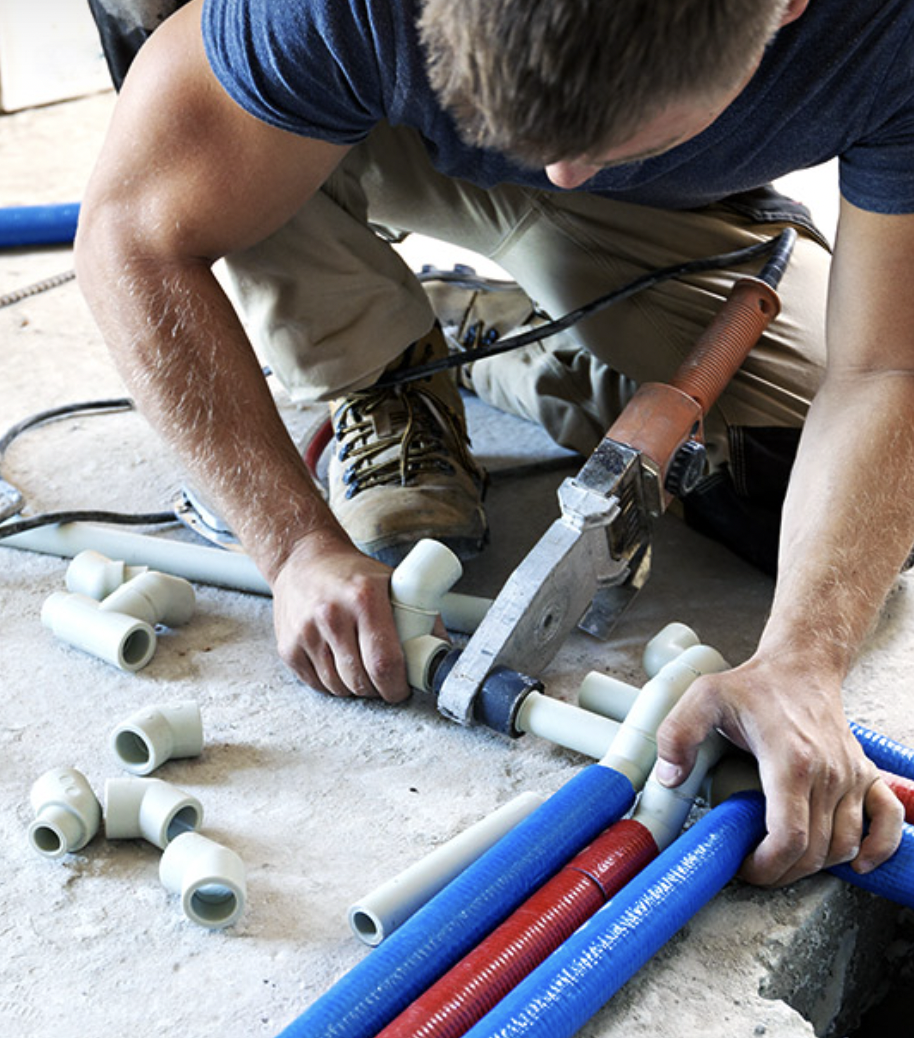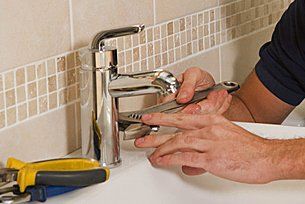Uncovering the Upcoming Phase of Plumbing: Patterns and Innovations
Uncovering the Upcoming Phase of Plumbing: Patterns and Innovations
Blog Article
What are your opinions about 7 Plumbing Industry Trends You Need To Know?

Intro
The pipes industry is going through a transformative phase driven by technological innovations and growing issues for sustainability and effectiveness. This short article discovers emerging trends and technologies forming the future of plumbing.
Smart Pipes Solutions
Including smart technology right into pipes systems allows remote tracking, leakage discovery, and automated upkeep. Smart sensors and IoT (Web of Things) devices allow homeowners and plumbing professionals to check water usage and spot issues in real-time, leading to extra effective resource management and positive maintenance.
Water Effectiveness Solutions
With boosting focus on water conservation, cutting-edge remedies are being created to lessen water wastage in plumbing systems. High-efficiency components, greywater recycling systems, and clever watering controllers are amongst the modern technologies aiding customers lower their water impact while maintaining comfort and ease.
Lasting Products
The shift towards sustainability extends to pipes materials, with an expanding preference for green alternatives. Eco-friendly piping materials, such as PEX (cross-linked polyethylene) and HDPE (high-density polyethylene), offer toughness and resistance to corrosion without endangering environmental stability.
Predictive Maintenance
Anticipating maintenance methods leverage information analytics and machine learning algorithms to expect and avoid pipes concerns before they occur. By evaluating historical information and efficiency metrics, predictive maintenance algorithms can identify patterns and abnormalities, allowing proactive treatments to avoid pricey repairs and disturbances.
Augmented Fact in Plumbing
Augmented Reality (AR) modern technology is changing pipes by providing technicians with real-time visual support for repairing and repair service jobs. AR-enabled wise glasses or mobile applications overlay digital details onto the physical setting, helping plumbing professionals visualize pipeline layouts, recognize concealed leaks, and carry out repairs with accuracy.
Effect of 3D Printing
The arrival of 3D printing has actually introduced brand-new possibilities in manufacturing pipes elements. From custom-made components to elaborate pipeline fittings, 3D printing enables rapid prototyping and on-demand manufacturing, reducing preparations and making it possible for higher customization in pipes design.
Health And Wellness Qualities
In reaction to enhanced issues for health and safety, pipes components are integrating functions such as antimicrobial surface areas, touchless operation, and self-cleaning devices. These developments not only improve health but additionally promote user comfort and benefit.
Hygiene-focused Fixtures
Touchless taps, self-sanitizing toilets, and antimicrobial surface areas are becoming increasingly widespread in residential and industrial setups, minimizing the risk of germ transmission and promoting a cleaner, much healthier environment.
Water Top Quality Monitoring
Developments in water high quality tracking modern technologies make it possible for home owners to keep track of the purity and safety and security of their water system in real-time. Smart water high quality sensing units can find contaminants, pH degrees, and temperature level variations, encouraging customers to take aggressive procedures to guarantee water safety.
Remote Plumbing Services
Remote diagnostics and online help are transforming the way plumbing solutions are provided. Via video clip conferencing and remote access technologies, plumbings can troubleshoot problems, provide support for do it yourself repairs, and even perform remote inspections, offering higher access and comfort to property owners.
Difficulties and Opportunities
While pipes innovations hold enormous assurance, they additionally present difficulties such as data personal privacy problems, regulatory conformity, and the demand for labor force training. Dealing with these obstacles calls for partnership in between industry stakeholders and regulative bodies to guarantee secure and accountable execution of brand-new technologies.
Governing Landscape
Regulatory frameworks play a vital duty in shaping the adoption of pipes innovations, with standards and codes regulating whatever from water effectiveness to item security. As modern technologies remain to evolve, regulative bodies must adapt to guarantee customer security and environmental stewardship.
Future Outlook
The future of pipes is characterized by continued innovation and assimilation with various other sectors such as IoT, renewable energy, and building automation. By welcoming sustainable practices, leveraging arising innovations, and focusing on user-centric layout, the plumbing industry is poised to attend to the developing demands of society while minimizing its ecological footprint.
Final thought
In conclusion, the future of plumbing is defined by a convergence of modern technology, sustainability, and user-centric layout. By accepting smart solutions, lasting products, and proactive maintenance techniques, the plumbing industry can enhance efficiency, promote safety and security, and contribute to an extra lasting future.
Plumbing Industry Trends You Need To Know
Smart technology in plumbing
Homeowners want to be able to manage their homes from their phones. The technology exists to make that happen. From smart toilets to leak detector devices, the whole plumbing system can be managed on an interconnected network made up of sensors, IoT devices, and machine learning algorithms.
This allows for wireless control to turn appliances on and off, automate routines, and access advanced monitoring to track water usage and flag potential issues. Smart technology streamlines water consumption, maintenance and energy usage, creating a more efficient system.
Green plumbing
The data analysis possible with smart technology not only improves convenience and cost-effectiveness but also fulfills a high-priority customer desire – sustainability. Consumers are very aware of their impact on the planet and want plumbing solutions to reduce damage and support sustainability. Eco-friendly plumbing solutions are already starting to emerge.
Customers can opt for low-flow toilets, water-saving faucets, and connections to sustainable energy sources. Beyond monitoring water consumption, customers can conserve water through the installation of greywater systems. This is a system that collects water that has been used but is still clean enough for some household uses such as toilet flushing.
Shorter product pipeline
To keep up with modern plumbing, plumbers need modern tools that enable them to complete jobs more efficiently. One technology making strides in this area is 3D printing. By 3D printing key plumbing fixtures, plumbers can reduce wait times even for specialized fixtures. It minimizes delays often seen in traditional manufacturing that frustrate customers and prevent plumbers from taking on more work.
Off-site repairs
Augmented reality is making a splash in many industries including plumbing. Plumbers can map a building online so they can explore the plumbing system through augmented reality, identifying areas of maintenance and repair completely digitally. This technology can be applied quite widely in plumbers’ work including planning installations and training new recruits. It’s safer, smarter and more efficient.
Low-footprint materials
Another way for plumbing companies to reduce their environmental footprint and meet the customer demand for sustainability is by using recycled materials in their work. The products they source and manufacture such as pipes, fixtures and faucets can be made from recycled materials. This saves the planet while being just as effective.
Onsite water purification
Additionally, plumbing companies can be advocates of water conservation and ease the financial and environmental concerns of customers by offering water purification systems. New water purification technology such as reverse osmosis systems and UV systems make it possible for homeowners and business owners to thoroughly cleanse water, removing contaminants onsite. This means the water can be safely reused in more ways than greywater can be, establishing a water recycling loop.
Tankless water heaters
Another innovation of modern plumbing is tankless water heaters. The idea is that the water is heated on demand as it runs through the system instead of being heated in a water tank. This is more energy efficient and therefore cost-effective and eco-friendly because water isn’t heated needlessly.

As an avid reader about Innovative Plumbing Trends Transforming Construction, I figured sharing that segment was smart. If you please take the time to distribute this page if you enjoyed reading it. We take joy in your readership.
Call Today Report this page